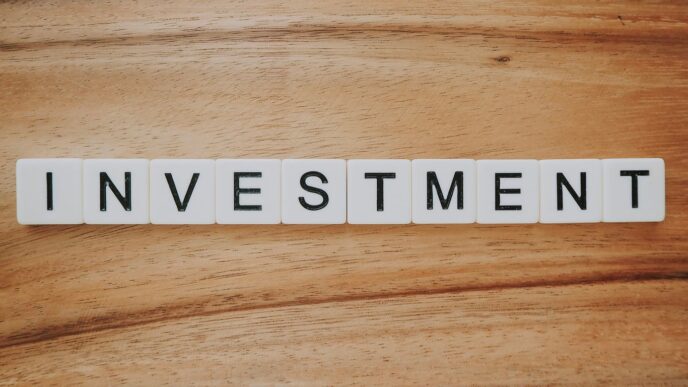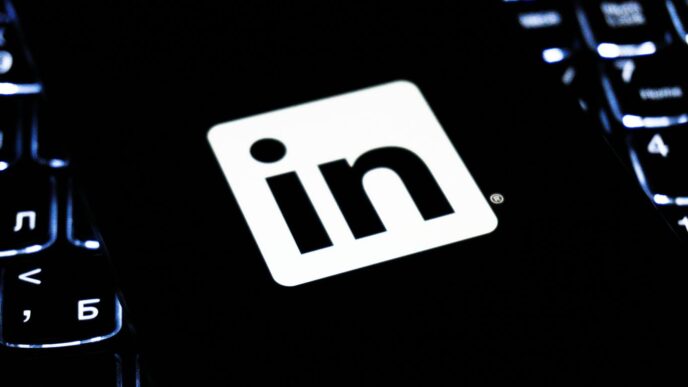Every entrepreneur knows that time is precious, especially when it comes to pitching ideas. You often have just a few moments to grab someone’s attention and convince them to care about your project. This is where the elevator pitch comes in. It’s a quick, impactful summary of your idea, product, or service that can open doors and create opportunities. Mastering this skill can be a game-changer for your entrepreneurial journey.
Key Takeaways
- An elevator pitch should be concise and captivating, lasting no more than 30 seconds.
- Focus on clearly stating the problem your idea addresses and how your solution stands out.
- Always end with a strong call to action, inviting your audience to engage further.
Understanding The Elevator Pitch
Defining The Elevator Pitch
Okay, so what is an elevator pitch? Basically, it’s a super short summary of you, your idea, or your company. Think of it like this: you’re stuck in an elevator with someone important, and you have 30 seconds – the length of a typical elevator ride – to impress them. It needs to be quick, clear, and memorable. It’s not just about what you do, but why it matters.
- Concise Summary: A brief overview of your business or idea.
- Time-Sensitive: Should be deliverable in under a minute.
- Impactful: Designed to grab attention and spark interest.
Its Role Within Entrepreneurship
Why is this so important for entrepreneurs? Well, first impressions matter. A lot. Whether you’re trying to get funding, find partners, or just network, you need to be able to explain what you do in a way that people get excited about. An elevator pitch is your go-to tool for that. It helps you:
- Secure Funding: A good pitch can pique the interest of potential investors.
- Attract Partners: Clearly communicate your vision to find like-minded collaborators.
- Build Your Brand: Define and share your brand’s essence quickly and effectively.
Think of it as your most important marketing tool. You can tweak it on the spot, depending on who you’re talking to. Practice makes perfect, so the more you use it, the better you’ll get at making a real connection.
Crafting A Compelling Elevator Pitch

Okay, so you know what an elevator pitch is and why it matters. Now, how do you actually write one that doesn’t make people’s eyes glaze over? It’s all about packing a punch in a short amount of time. Let’s break it down.
Starting With A Hook
Think of your hook as the bait. You need something that grabs attention immediately. No one wants to hear a boring intro. Here are some ideas:
- A startling statistic: "Did you know that 80% of small businesses fail within the first five years?"
- A bold statement: "We’re revolutionizing the way people manage their finances."
- A question that makes them think: "What if you could double your sales in the next quarter?"
The goal is to make them want to hear more. Don’t be afraid to be a little unconventional. A good hook sets the stage for everything else.
Identifying The Problem
Once you’ve got their attention, you need to show them why they should care. What problem are you solving? Be specific. Don’t just say "We help businesses." Dig deeper. For example:
- "Many businesses struggle with inefficient inventory management, leading to lost revenue and wasted resources."
- "People are overwhelmed by the complexity of investing, and they don’t know where to start."
- "Existing project management tools are clunky and difficult to use, causing frustration and delays."
Make sure the problem you identify is something your audience can relate to. If they don’t feel the pain, they won’t be interested in your solution. Understanding entrepreneurial challenges is key to crafting a pitch that resonates.
Presenting Your Unique Solution
This is where you shine. How do you solve the problem you just identified? What makes your solution different from everything else out there? This isn’t just about listing features; it’s about explaining the benefit of those features. Consider these points:
- Focus on the "why," not just the "what." Instead of saying "We have an AI-powered platform," say "Our AI-powered platform helps you automate tasks, freeing up your time to focus on what matters most."
- Keep it simple. Avoid technical jargon. Use language that anyone can understand. The best elevator pitches are easy to grasp.
- Highlight what makes you different. What’s your secret sauce? What do you do better than anyone else? This is your chance to stand out from the crowd.
Highlighting Your Value Proposition
Your value proposition is the promise you make to your customers. It’s the reason they should choose you over the competition. It needs to be clear, concise, and compelling. Think about it this way:
- What are the key benefits of your product or service?
- Who is your target audience?
- Why should they care?
For example, "For busy professionals who want to save time and money, our meal delivery service provides healthy, delicious meals that are ready in minutes." That’s a clear value proposition. Make sure yours is just as strong.
Engaging The Audience With A Call To Action
Don’t let your pitch just hang there. Tell people what you want them to do next. A call to action (CTA) gives them a clear path forward. Some examples:
- "I’d love to schedule a quick demo to show you how our platform can help your business."
- "Can I send you some more information about our investment opportunities?"
- "Would you be open to a brief conversation next week to discuss your needs?"
Make it easy for them to say yes. A strong CTA turns a good pitch into a great opportunity. Remember, the goal of your elevator pitch is to start a conversation, not to close a deal on the spot.
Perfecting Your Elevator Pitch
Tips For Refining Your Pitch
Okay, so you’ve got a draft. Now comes the fun part – making it shine. Think of it like polishing a rough stone. You want to smooth out the edges and really make it sparkle. Here’s how I usually go about it:
- Get feedback, lots of it. Talk to friends, family, even strangers if you’re brave enough. The more ears you get on your pitch, the better. Ask them what they remember, what confused them, and what excited them. Don’t take it personally; it’s all about making the pitch better. For example, you might want to test your pitch at networking events to see how it lands with potential investors.
- Record yourself. Seriously, do it. It’s painful, but so helpful. You’ll catch all those little "umms" and "ahhs" you didn’t even know you were making. Plus, you can see if you look as confident as you feel (or hope to feel!).
- Practice, practice, practice. I don’t mean memorizing it word-for-word. That’ll make you sound like a robot. Instead, know the key points inside and out, and then practice saying them in different ways. The goal is to sound natural, even when you’re under pressure. Think of it like learning to ride a bike – at first, it’s awkward, but eventually, it becomes second nature.
- Tailor it. What works for a tech conference might not work for a room full of venture capitalists. Know your audience and tweak your pitch accordingly. It’s like choosing the right bait when you’re fishing – you want to use something that’ll attract the specific fish you’re after.
Common Mistakes To Avoid
We all make mistakes, it’s part of being human. But when it comes to your elevator pitch, some mistakes are more costly than others. Here are a few I’ve seen (and made!) over the years:
- Being too long. Remember, it’s an elevator pitch, not a dissertation. If you’re still talking after a minute, you’ve lost them. Keep it short, sweet, and to the point. Brevity is key. Make sure you can summarize your idea in the time it takes to travel from one floor to another. In terms of actual time, that generally means you’ve got less than one minute to make a connection and a strong impression on someone. So, be brief and make every second count. A good elevator pitch should be concise and engaging.
- Using jargon. Unless you’re talking to a room full of experts in your field, avoid technical terms and industry buzzwords. You want to be understood, not sound smart. Speak in plain English. The goal is to make your idea accessible to everyone, regardless of their background.
- Forgetting the call to action. What do you want them to do after hearing your pitch? Do you want them to invest? Partner with you? Buy your product? Make it clear. Don’t leave them hanging. A compelling call-to-action tells your listeners what you would like them to do and how they’ll benefit from doing it. For example, you may want prospects to hire you or buy your product, and potential service providers to consider partnering with you. Remember, people can only do what you want them to do when you are clear and concise.
- Not being enthusiastic. If you don’t sound excited about your idea, why should anyone else be? Let your passion shine through. It’s contagious. Stand up straight, smile, and make eye contact. How you deliver it is as important as the content. Speak in an even but energetic tone, stand up straight, smile and maintain eye contact.
Crafting the perfect elevator pitch is key to making a great first impression. It’s your chance to share who you are and what you do in just a few sentences. Want to learn more about how to create a pitch that stands out? Visit our website for tips and tricks that can help you shine!
Wrapping It Up
So, there you have it. Crafting a solid elevator pitch is key for any entrepreneur looking to make an impression. Remember, it’s all about being clear and concise. You want to grab attention and leave them wanting more. Practice makes perfect, so don’t hesitate to rehearse your pitch with friends or at networking events. The more you refine it, the better you’ll get. And who knows? That quick chat in the elevator could lead to your next big opportunity. Stay ready, stay confident, and keep pitching!














